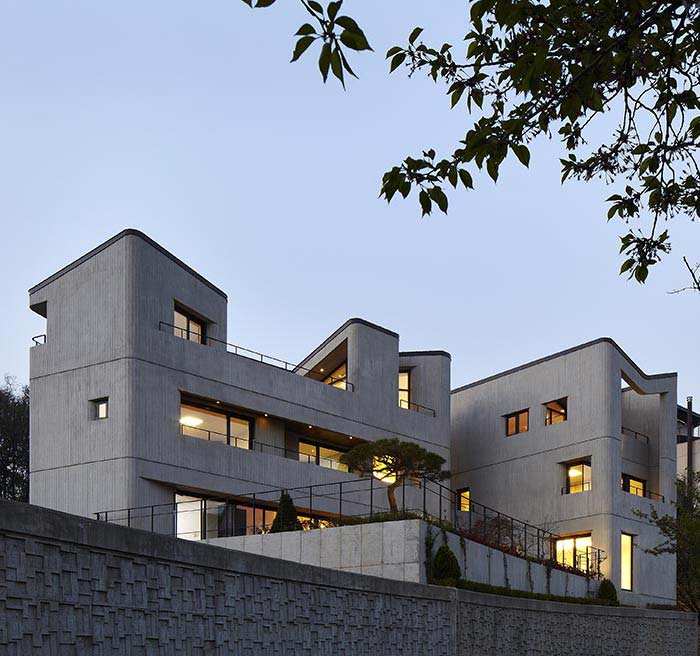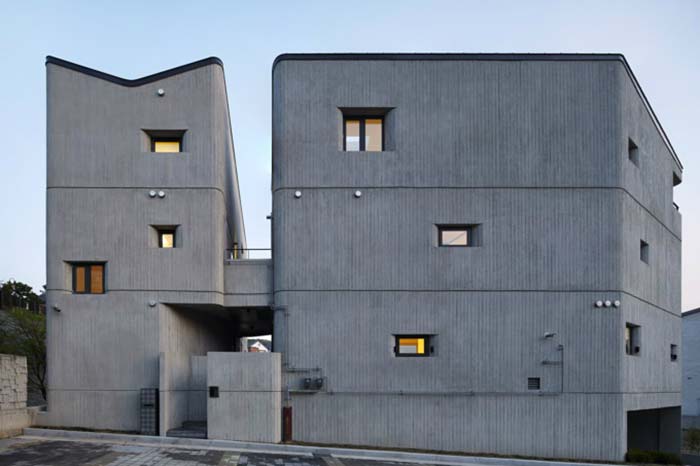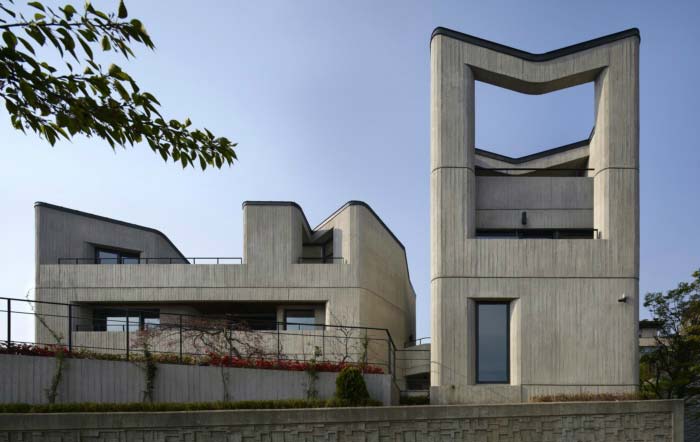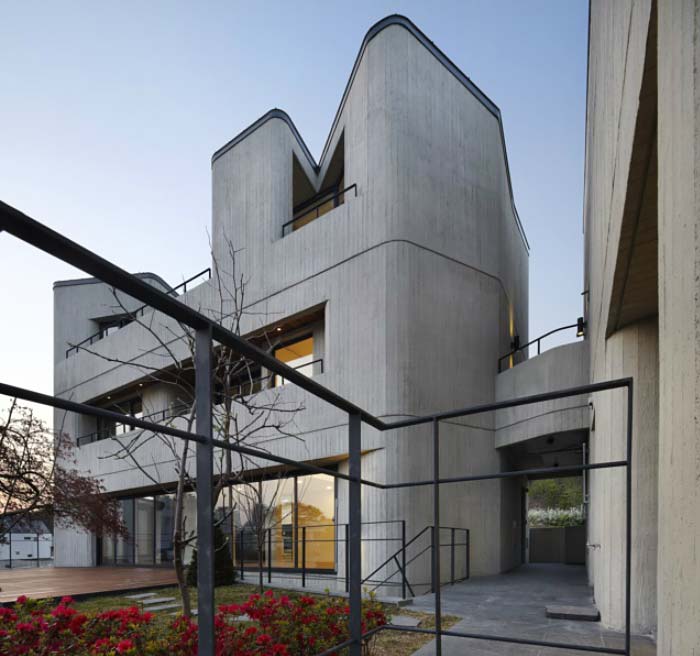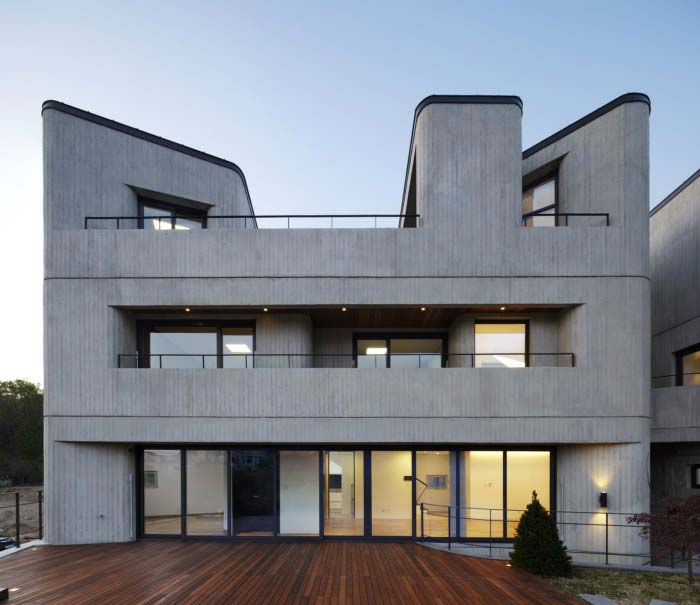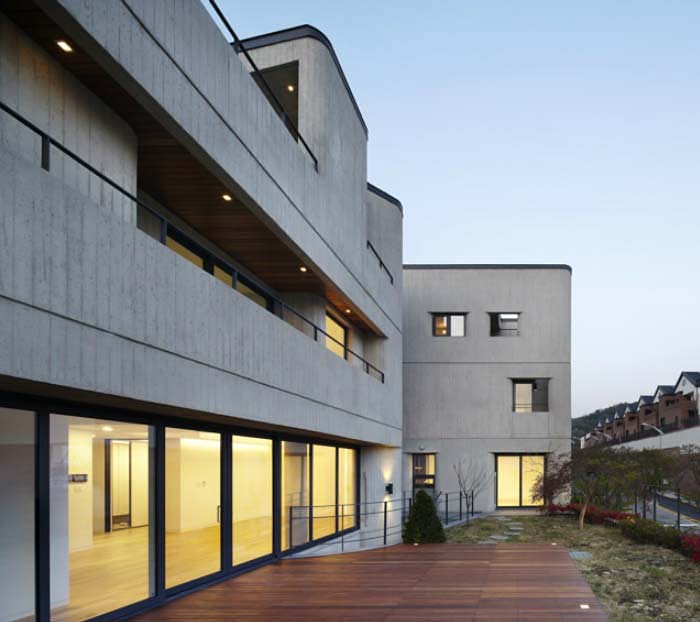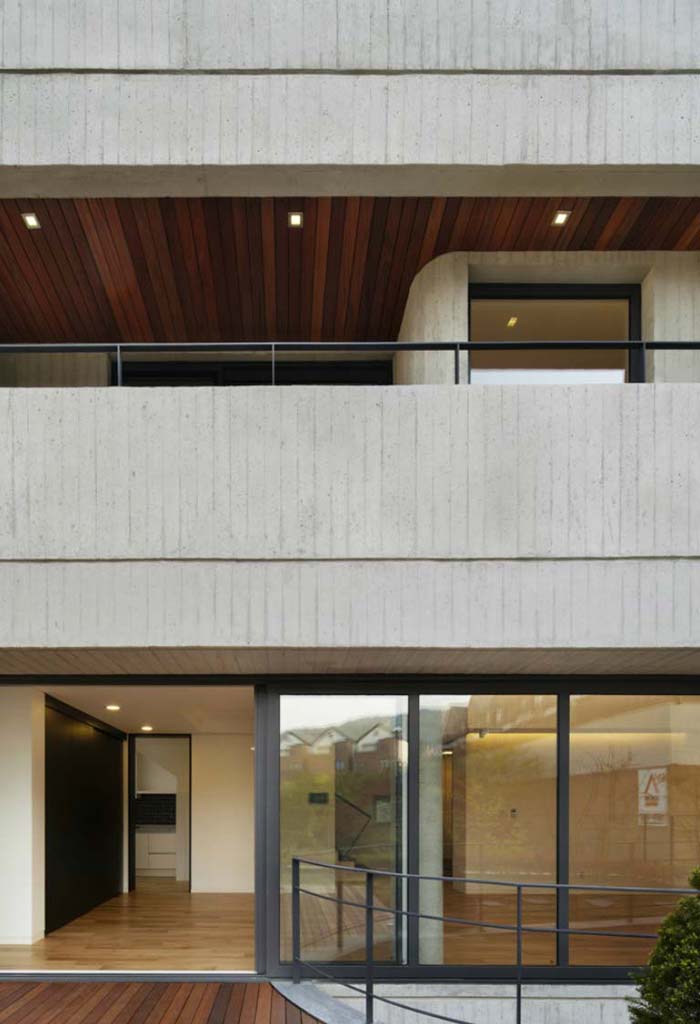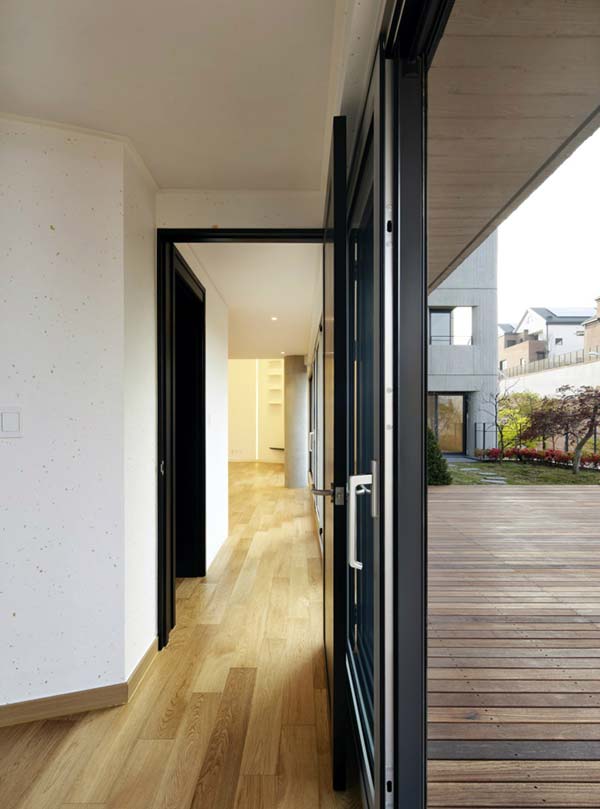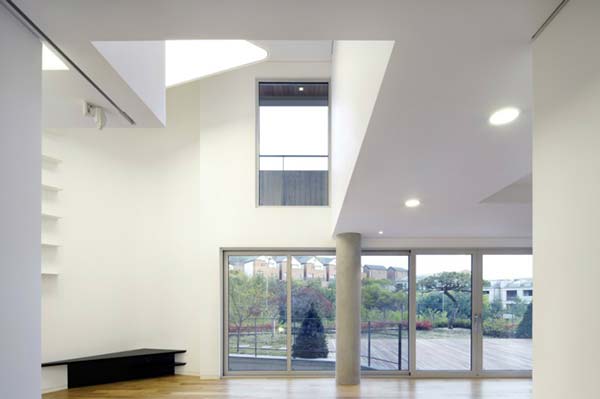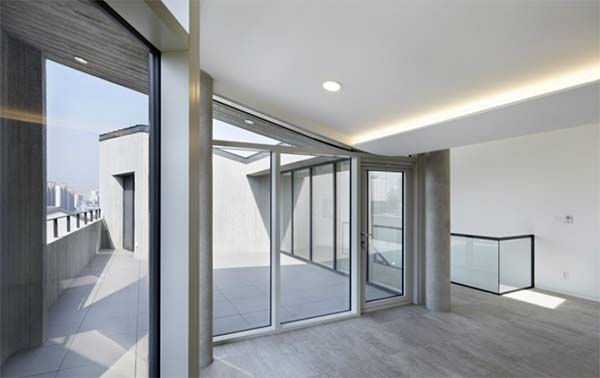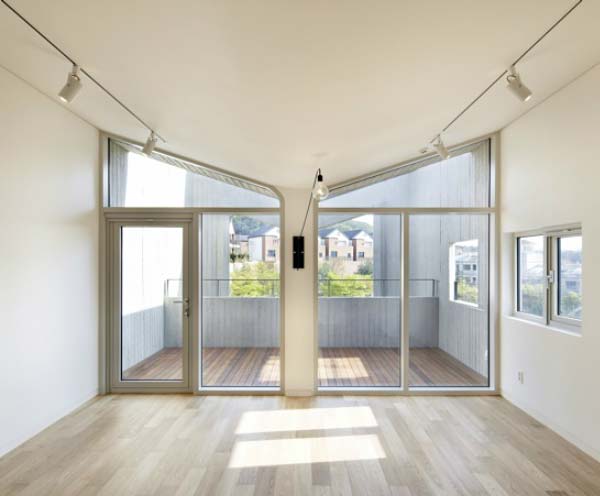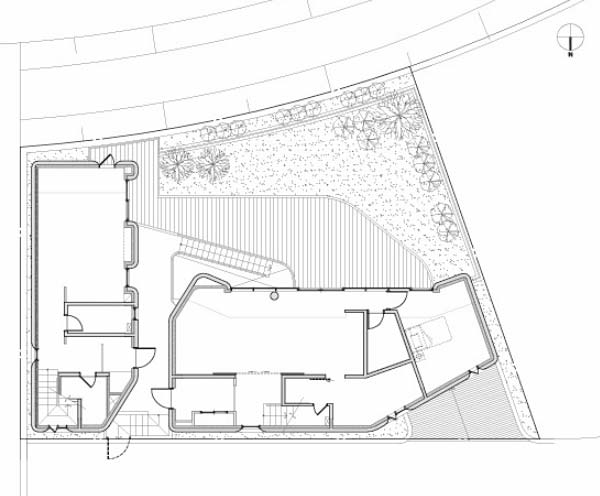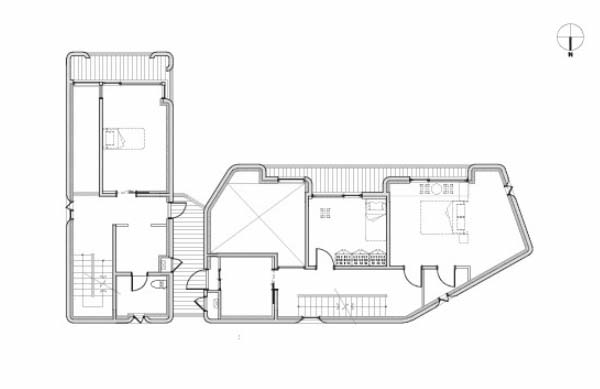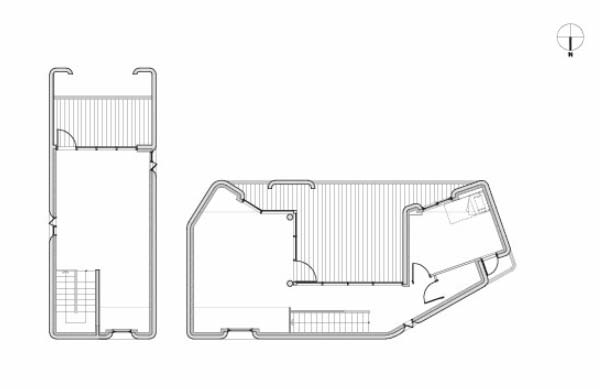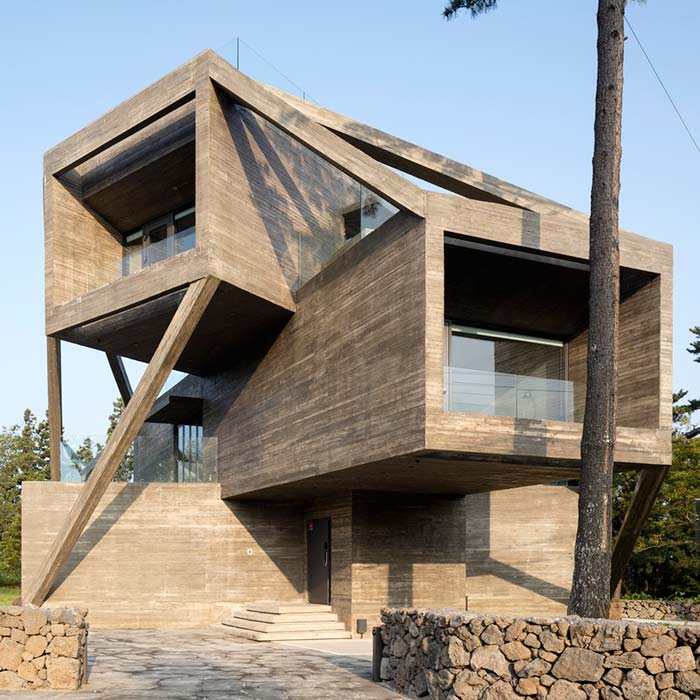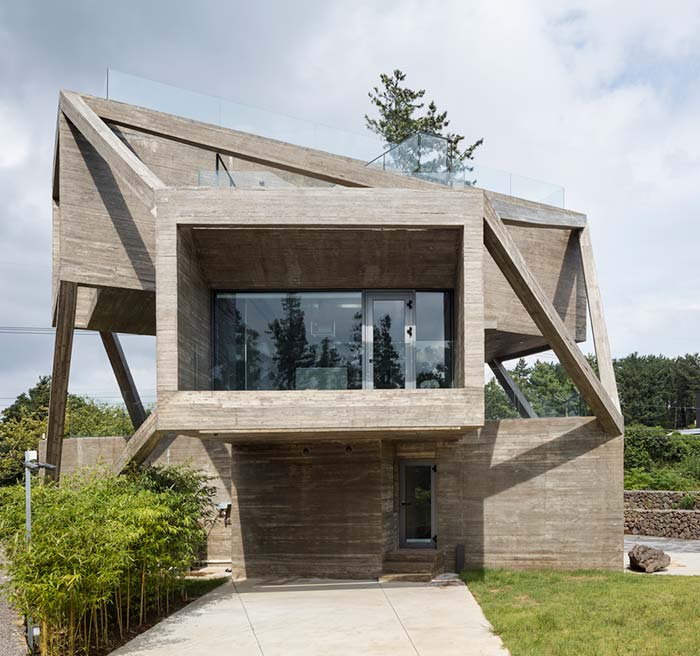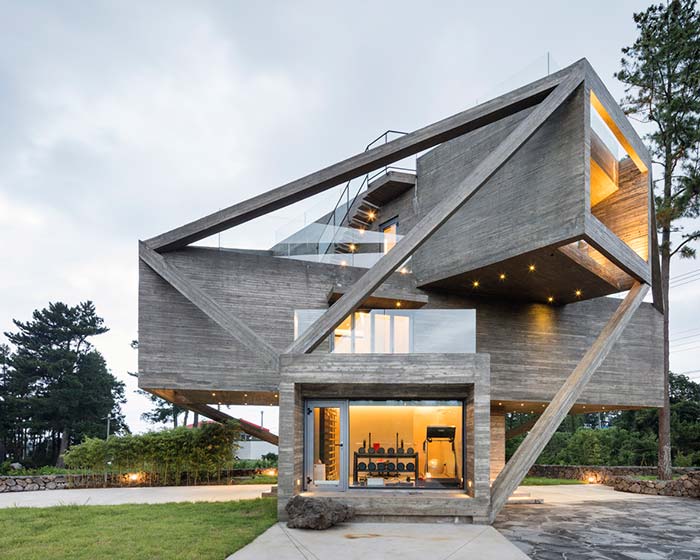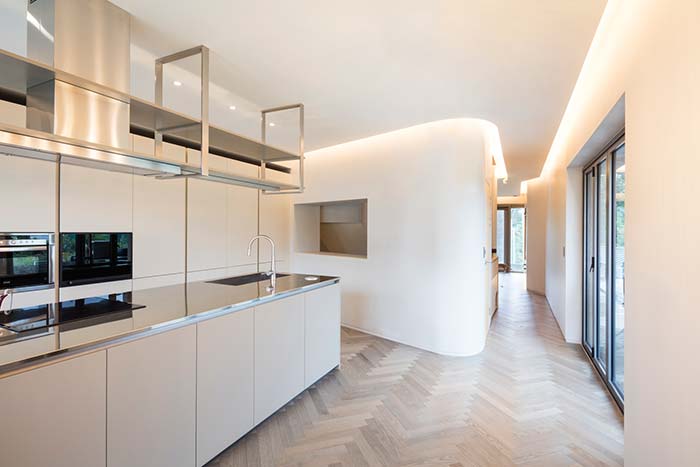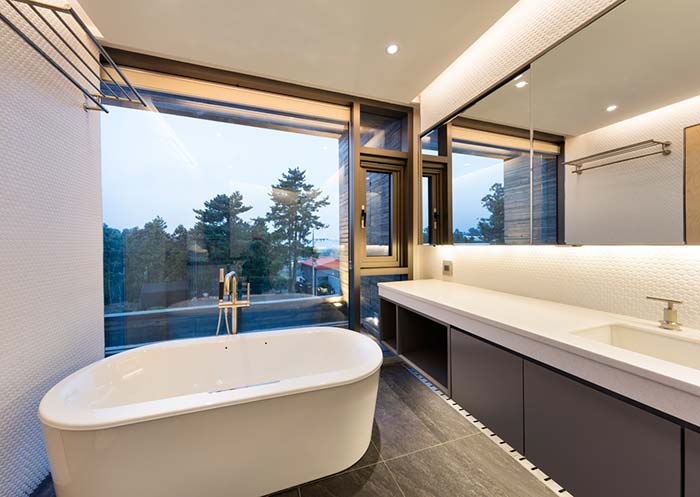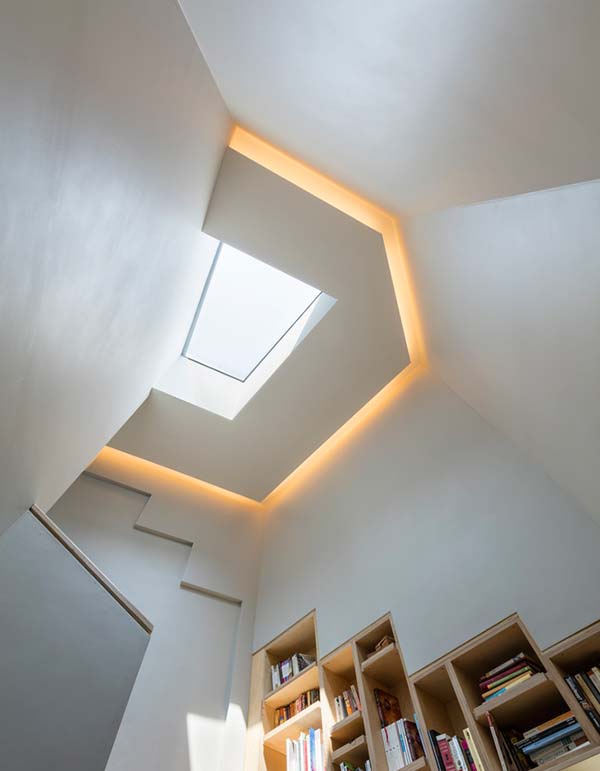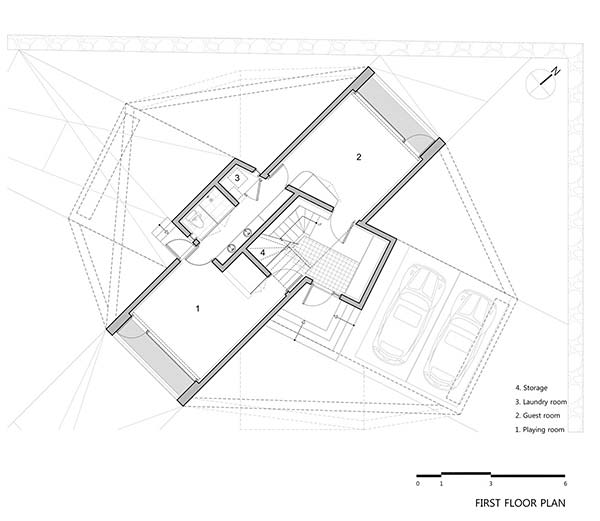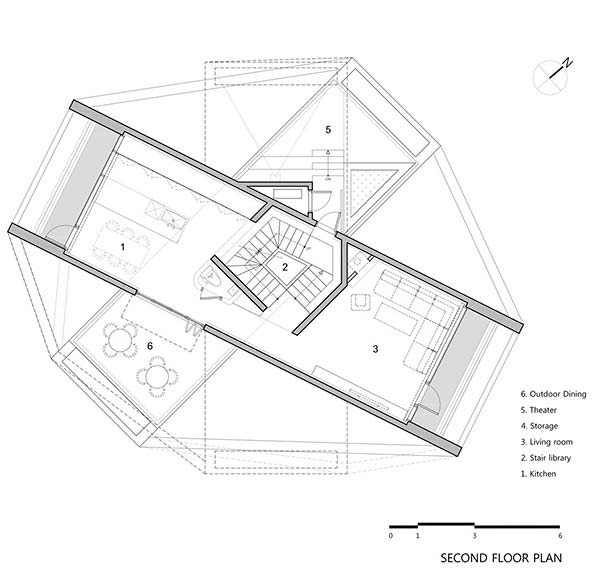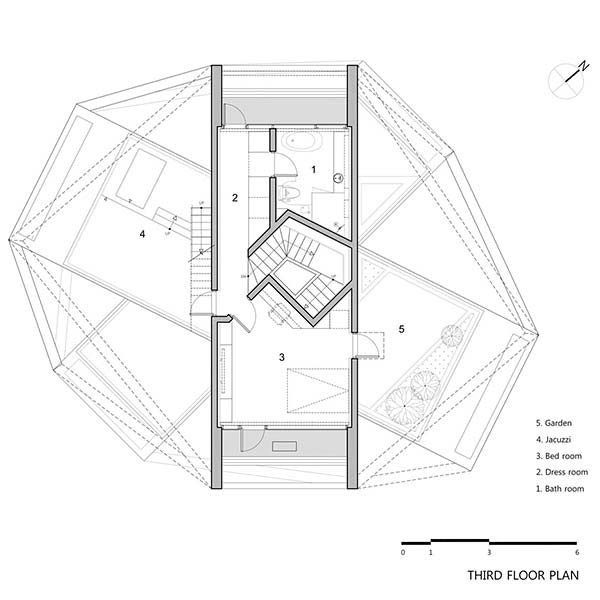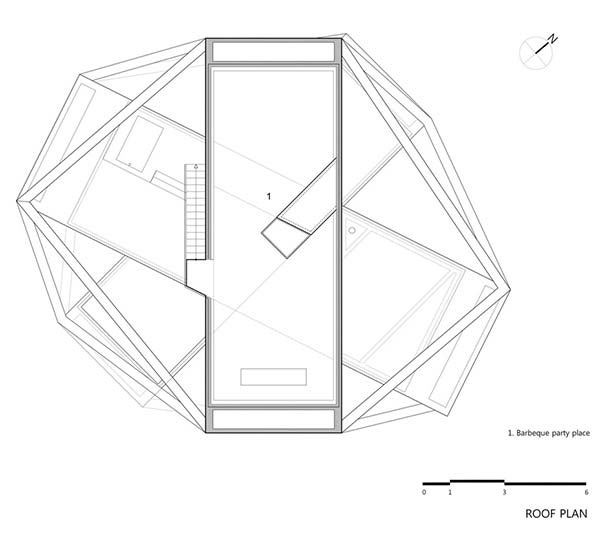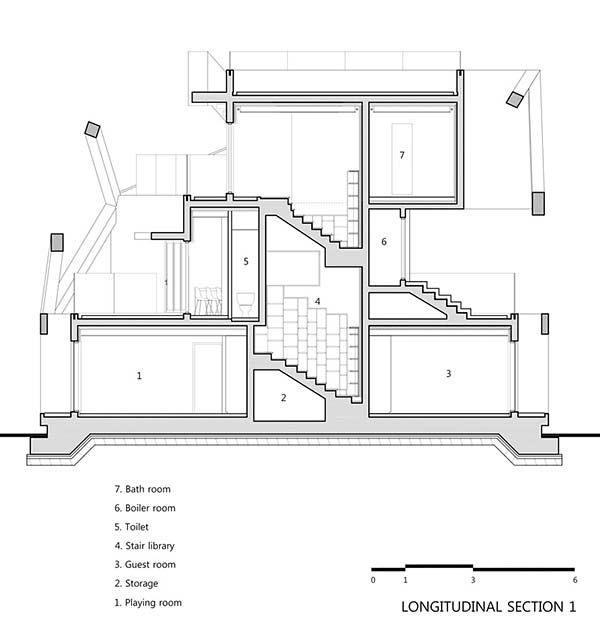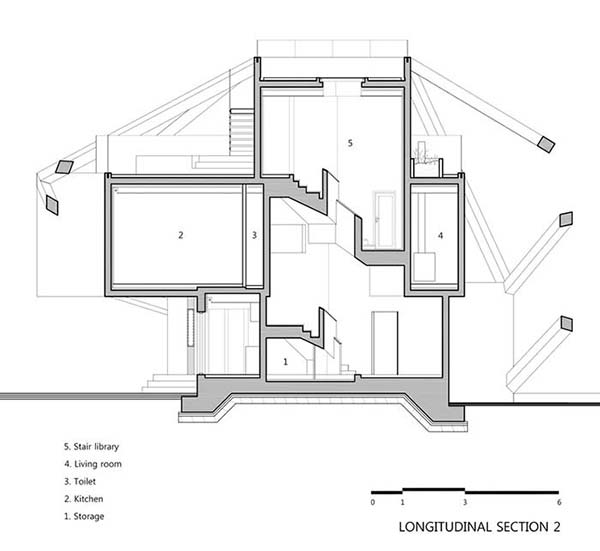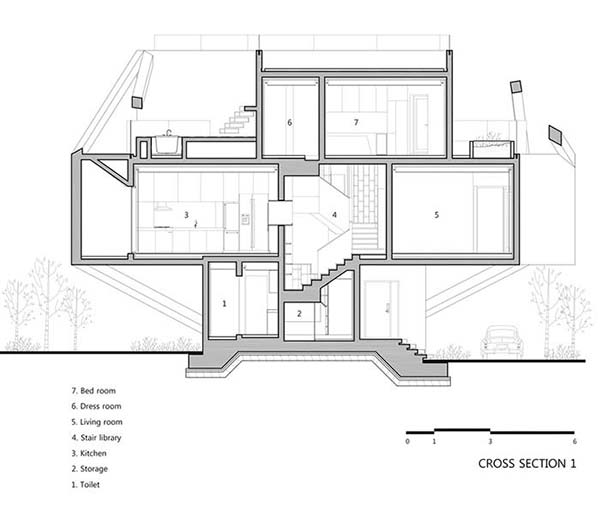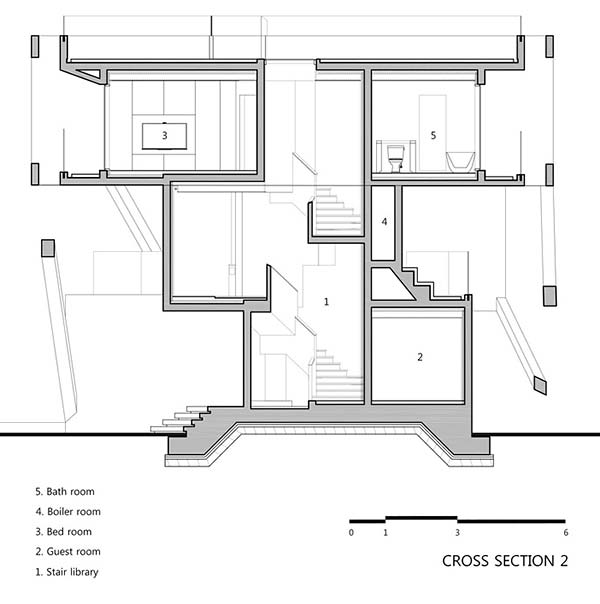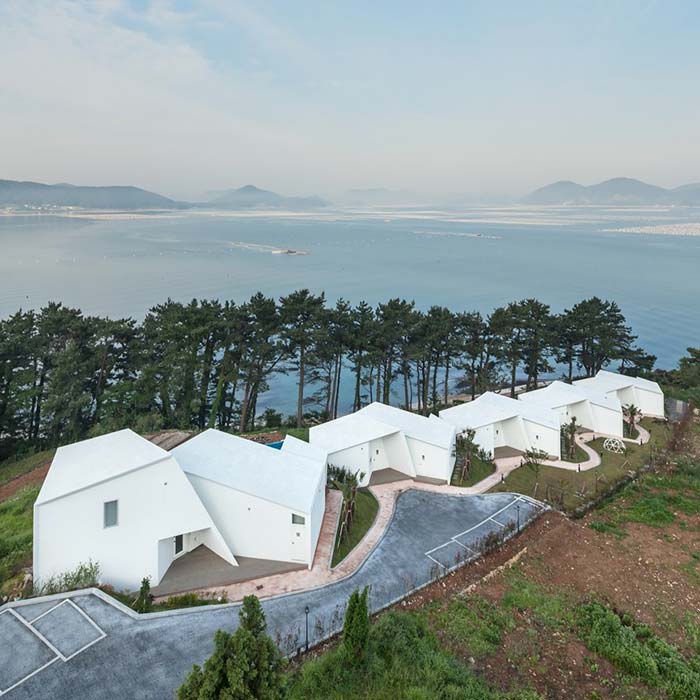
white, sculptural buildings rest on a cliff of the southern coast in Geoje Island, South Korea. The white walls fold in themselves to create a private ocean view from each house. Tall pine trees that grow between the buildings and the sea form occasional view frames. This is the second resort for the hospitality group called “House of Mind.”
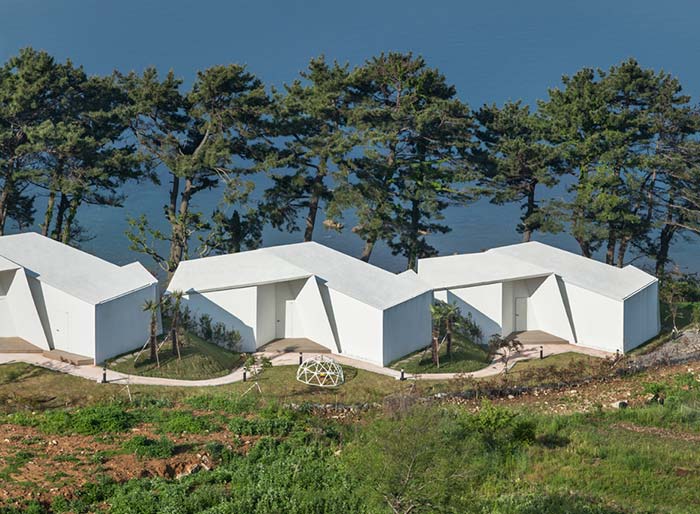
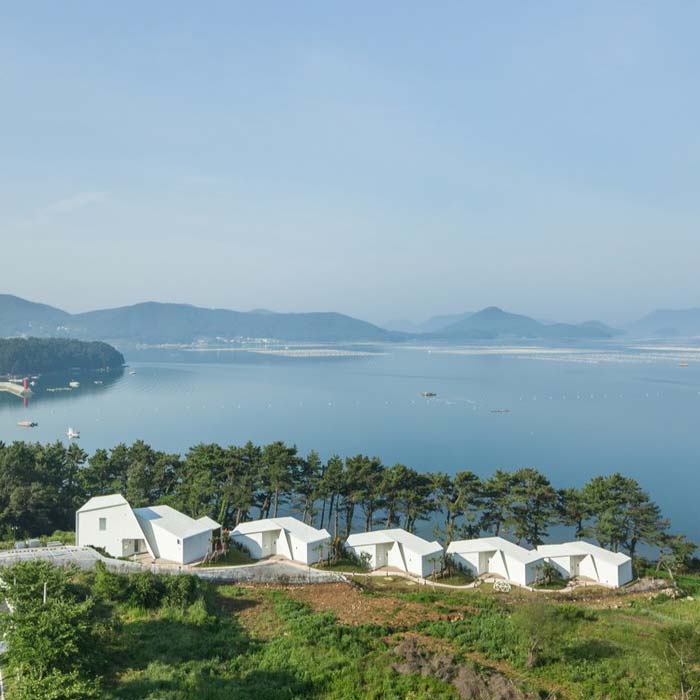
The two-storey Knot House at the top is a clubhouse as well as the owner’s residence. At the border of the clubhouse, a V-shaped infinity pool merges with the ocean afar. Four other one-storey Knot Houses host six guest rooms. The narrow and long strip of the building site provided an initial challenge to fit maximum number of units while maintaining privacy and ocean view.
Atelier Chang suggested a layout to turn each house by 40 degrees toward the sea. This staggering allows an unrestricted ocean view for the guests and produces niches of private zones. Simulta¬neously, it amplifies the dynamic outline of the roofs where the visitor can read the continuity of the white angular masses forming mountainous peaks.
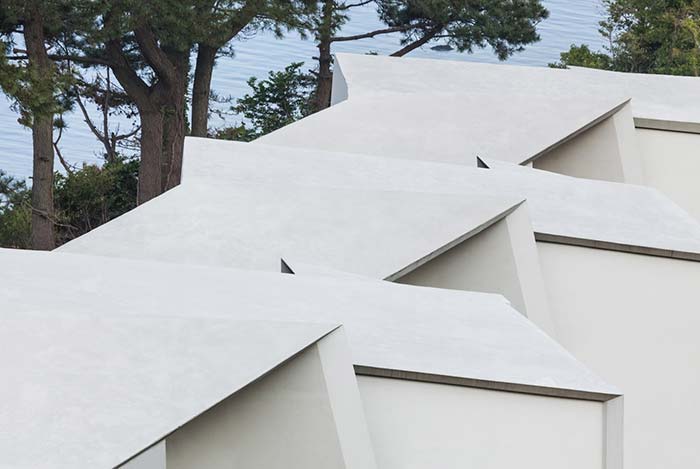
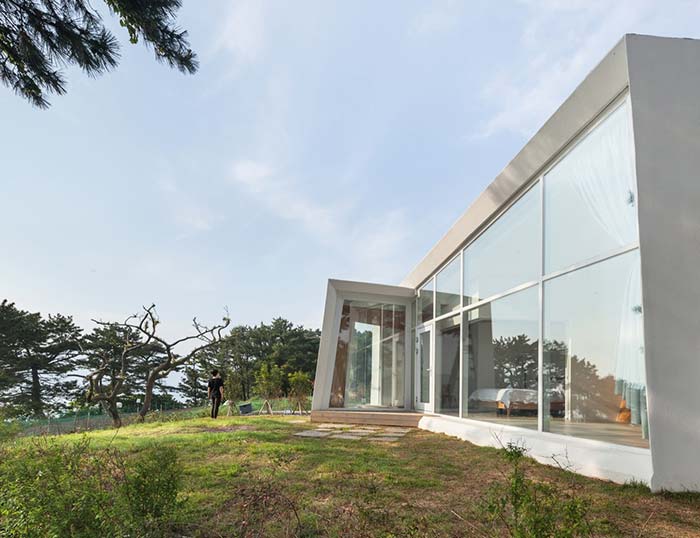
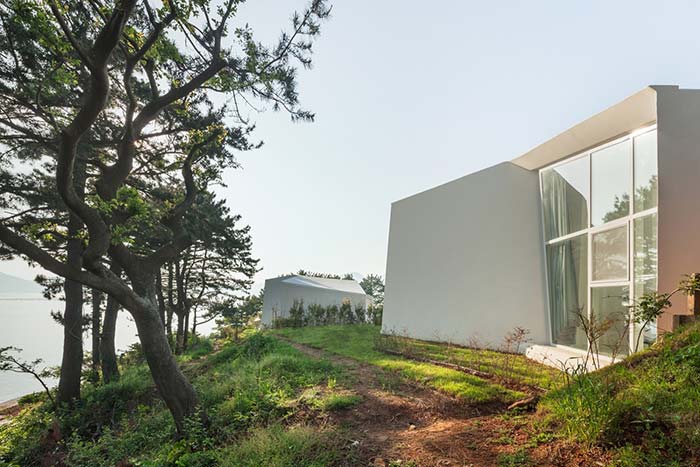
The knot’s folding and unfolding creates different aperture in and outside the building. Where the knot unfolds in the front, 3 to 5 meter full height windows open toward the ocean view. In the rear, it tightens up and provides complete enclosure for privacy.
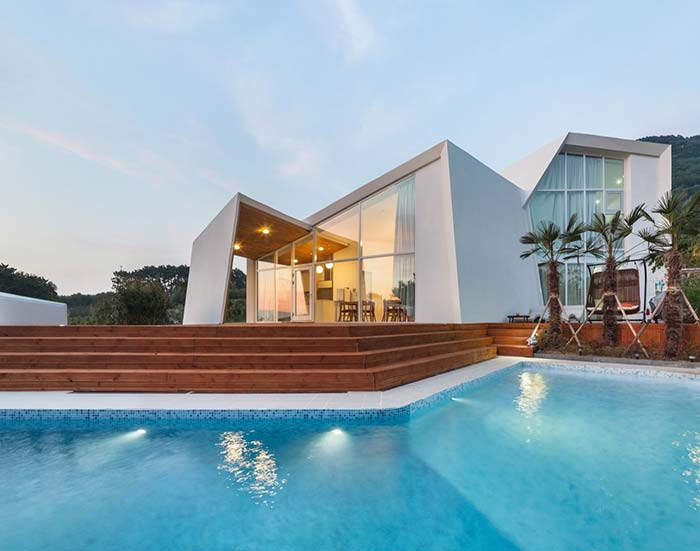
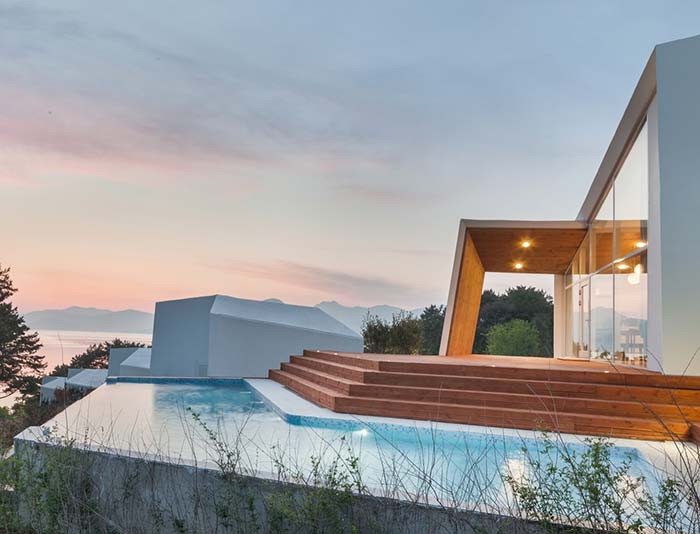
Where the knot gets most loose, an intimate experience of bathing manages to escape out to the exterior garden. The boundary between the inside and outside seems blurred at this moment. It may feel ironic to be sitting in a Jacuzzi looking out to the ocean and garden on either side of the tub. The strategic manoeuvre of the knot aimed at providing such a unique experience while maintaining privacy. The knot continues as an interior intervention on a wooden strip. It demarcates a private zone for bed and tub sitting in the open living room.
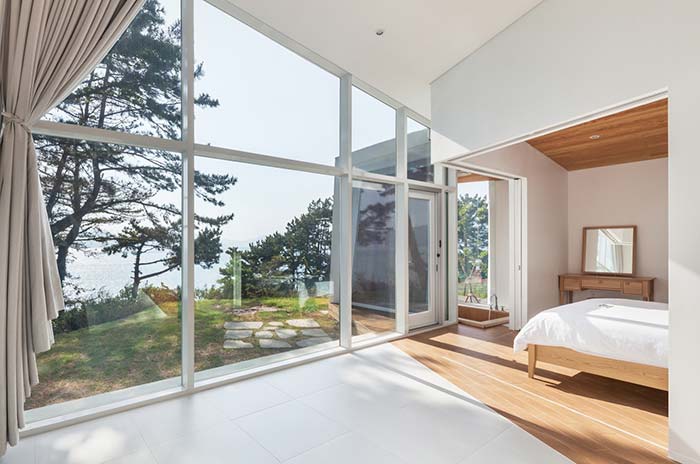
During the concept phase of the project, a key question was how to achieve seamless spatial connection between outdoor landscape and indoor living space through architecture. To answer that question, one had stop separating the building from the ground. Instead Atelier Chang imagined a surface made of landscape, which eventually folds into a knot to create an enclosure. The wild landscape floods into the terrace, generates patterns of herb garden, and gradually reaches the interior in continuous manner.
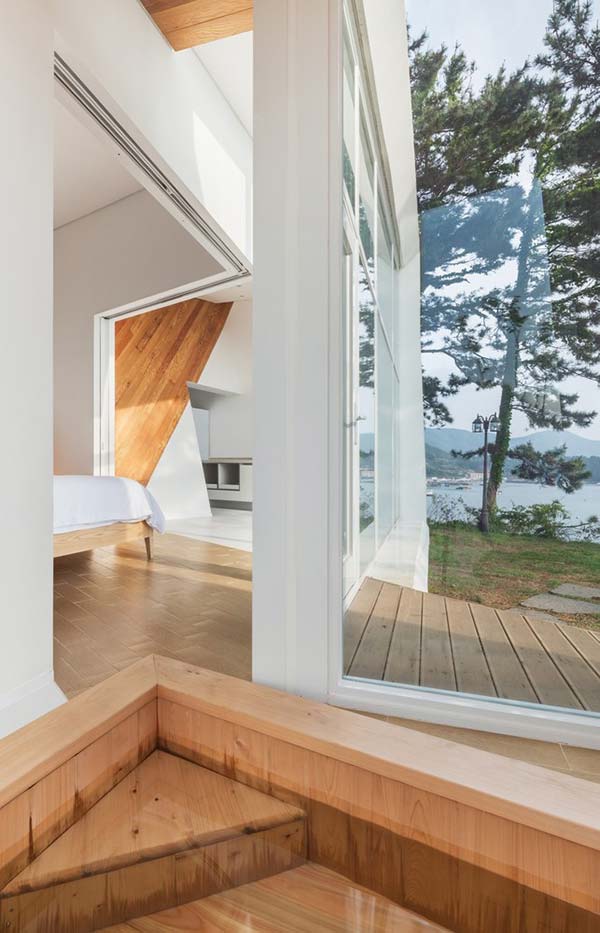
The initial design was conceived for providing three typologies that mimic different knots. Like choosing a product from a catalogue, an interested client can choose and combine multiple typologies, then form a unique master plan to suit the site. Also the project brings multiple advantages from the real-estate point of view. At first, multiple units can be built for hospitality to generate immediate income. Years later, they can be converted and sold as residential units. The design itself took account of adaptability throughout the life span of the building from a guest unit to a fully functioning residence.
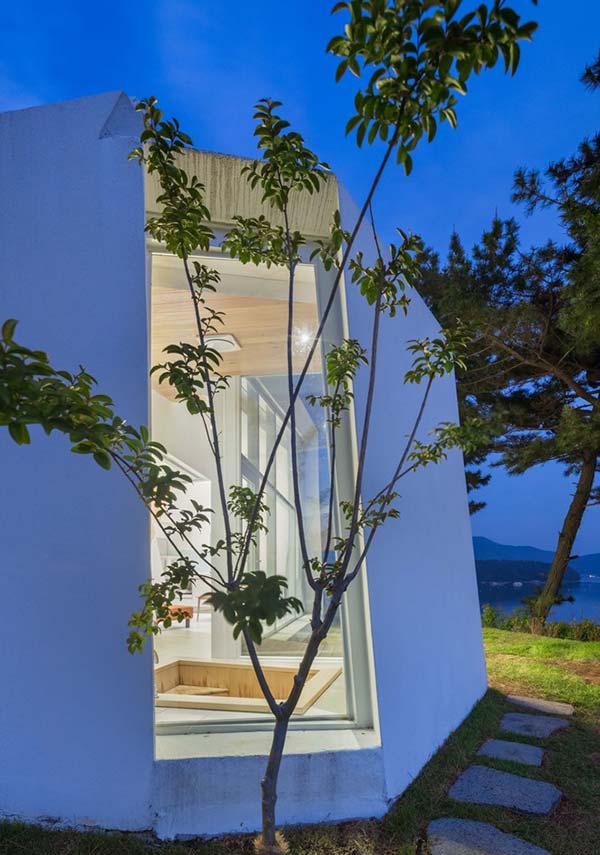
Architects
: Atelier Chang
Location
: Geoje-si, South Korea
Design Team
: Soohyun Chang, Federica Russo, Ryan Day, Hyunwoo Chung
Area
: 403.0 sqm
Project Year
: 2014
Photographs
: Kyungsub Shin
Contractor
: HOM
Structure Design
: Thekujo
Local Architect
: K20Art Architects
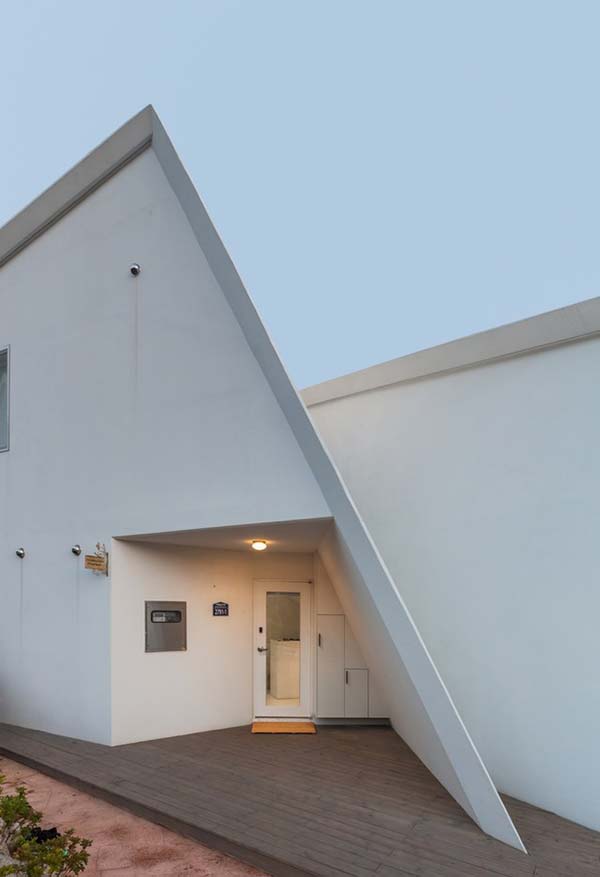
Atelier Chang is an international design praxis based in South Kensington, London and Zurich since 2011. Our design philosophy is to create innovative design through focusing on the unembellished basics – basics of nature, social behaviour, and urban phenomena.
To achieve this absolute simplicity of content through impactful forms takes extra effort in researching the context, a devotion to material and technology, and active interaction with other industries. Currently we work on projects in Asia and Europe at multiple scales of design, covering master plans, architecture, interior design, installations, and products.
Soohyun Chang founded Atelier Chang in 2011 to reinvent architectural design through new program, material, and construction method. Our design aims at larger impact for more people, which require more careful consideration of sustainability and strategy. The current London-based office works on project in different countries mainly focusing on resorts, restaurants, and residential development industry.
Atelier Chang
